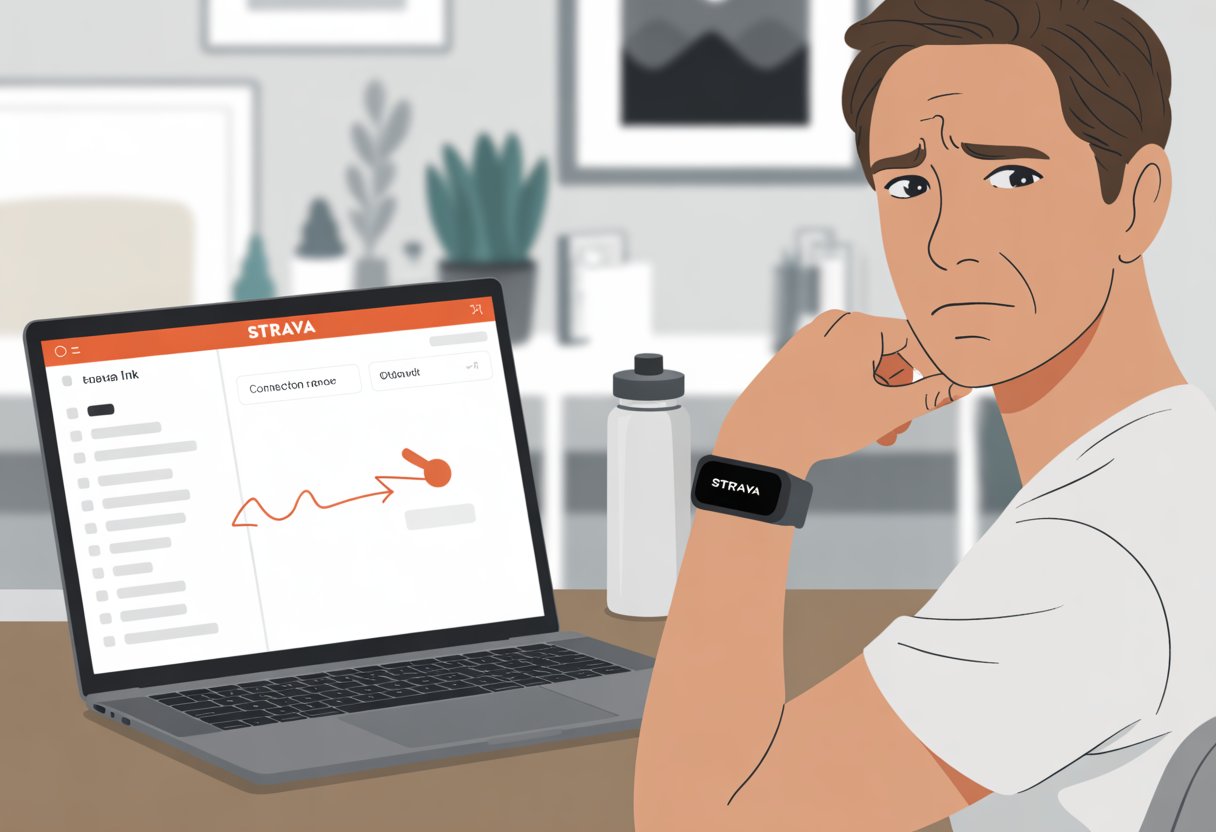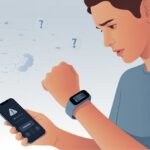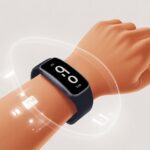Ever feel like your fitness tracker and Strava are two stubborn kids in a sandbox, refusing to play together? Honestly, you’re not alone.
Most of the time, our fitness trackers just won’t pair with Strava because the two apps can’t connect, we’re missing some permissions, or our devices need a little troubleshooting TLC. Sometimes it’s a quick sync glitch. Other times, storage or account settings are waving a red flag somewhere in the background.

We’ve all felt that frustration—finishing a workout, only to watch it disappear into a black hole instead of showing up on Strava. Maybe your Apple Watch acts like it’s never met Strava, or your Fitbit suddenly goes on strike. Syncing problems can really make you scratch your head.
But hey, let’s break down why our trackers and Strava act up, and see if we can finally get them to cooperate.
Common Reasons Your Fitness Tracker Won’t Pair With Strava
Sometimes tech just throws a fit. Whether you’ve got a Fitbit, Garmin, Mi, or something else, a few main troublemakers usually block us from connecting to the Strava app.
Knowing what’s actually going wrong can save us a lot of time and frustration.
Outdated App Versions
We all ignore those annoying update notifications. But when Strava or your fitness tracker app is out of date, things get weird fast.
Old apps might refuse to recognize each other or just stop talking altogether. Garmin, Fitbit, or Mi apps want to be paired with the latest version—otherwise, we’re stuck in syncing limbo.
Here’s what usually happens:
- Activities don’t upload
- Devices vanish from connections
- Weird error messages start popping up
- Buttons disappear for no reason
The fix? Check the App Store or Google Play and hit “Update.” We should do this for both the Strava app and our tracker’s app to give ourselves the best chance.
Compatibility Issues
Not every tracker wants to play nice with Strava right out of the box. If you try pairing a seven-year-old Mi Band with a shiny new Strava app, don’t be surprised if they just argue.
Here are some usual suspects:
- Some Fitbit models won’t share all their data with Strava
- Older Mi Bands sometimes skip important workout info
- Certain Garmin devices can’t send over every feature
Take a peek at Strava’s official compatibility page or your tracker’s manual before you spend too much time troubleshooting. If they’re not compatible, you might be better off logging your steps the old-fashioned way.
Account Sync Errors
Even when everything else looks perfect, our accounts sometimes just won’t cooperate.
Failed logins, denied permissions, or tangled connections between Strava and our tracker app can kill the pairing process. For example, if Fitbit is being stubborn, disconnecting and reconnecting accounts might help.
Strava even suggests logging a new activity to “push” old ones through—sometimes it works, sometimes it just makes us sigh. Here are some tips that might help:
- Log out and back in (the classic move)
- Revoke and re-enable permissions
- Reconnect the account from settings
And sometimes, all we can do is wait. Patience is underrated, and hey, it gives us an excuse to step away from the screen for a bit.
Device-Specific Pairing Problems
Some fitness trackers just wake up on the wrong side of the bed and refuse to pair with Strava, no matter what we try. Each brand seems to have its own particular quirks, as if these watches are holding grudges.
Fitbit Troubles
Oh, Fitbit. We start every day together, but syncing with Strava can feel like teaching a cat to fetch.
Usually, it’s an account linkage problem—if the accounts aren’t connected right, our steps vanish. To fix this, disconnect and reconnect the accounts, and make sure the Fitbit app is fully synced before checking Strava.
Sometimes, updates throw things off. Logging out and back into both apps can work wonders. If issues keep popping up, try clearing the Strava or Fitbit app’s cache.
You can find more tips for stubborn Fitbit and Strava syncing.
Garmin Gremlins
Garmin watches track everything, but sometimes they just ignore Strava completely. Usually, the Garmin Connect app is the culprit. If it hasn’t synced with our watch, Strava gets nothing.
Open Garmin Connect, let it update, and check the Bluetooth connection. If Garmin and Strava aren’t talking, unlink and relink them—it usually helps.
Firmware and app updates can mess stuff up, so restart your phone and watch now and then. If you’re still stuck, uninstalling and reinstalling the Garmin Connect app might fix it, even if it feels a bit drastic.
mi and Zepp Connection Challenges
mi and Zepp—names that sound futuristic, but sometimes syncing with Strava feels like time travel in reverse. Pairing issues here often come down to missing permissions or skipped updates.
Check that the mi Fit or Zepp app has Physical Activity and Location permissions enabled. If that doesn’t work, unlink both apps from Strava, reboot your phone, and try again.
Double-check if your mi or Zepp account even supports direct sync with Strava—some models just don’t. If you’re still stuck, update the app or try a fresh install. For more help, see device-specific Strava connection troubleshooting.
Strava App Settings That Sabotage Syncing
Sometimes, it’s not the tracker—it’s Strava itself, quietly sabotaging things behind the scenes. Setting up connections the wrong way or missing tiny permission toggles can block syncing and leave us wondering what we missed.
Strava Permissions Madness
Strava loves permissions, and sometimes we just tap “allow” (or “deny”) without thinking. The app needs access to our fitness tracker’s data and our phone, so skipping a permission can stop everything cold.
Check if Strava can access Bluetooth, location, and physical activity data. Accidentally say “no” to any of these and syncing won’t happen. On iPhone, check both the Strava app and Apple Health settings. Android users should look in “App management” under device settings.
Strava’s support suggests force closing and reopening the app, which sometimes wakes up lazy permissions. Also, if your phone’s storage is low, Strava might refuse to sync—here’s how to troubleshoot.
OAuth Authorization Hiccups
OAuth sounds fancy, but it’s just Strava’s way of letting us connect other accounts without sharing passwords. If we mess up signing in or click the wrong option, the connection falls apart.
When linking a tracker or other services, Strava asks us to authorize access using OAuth. Sometimes we ignore the screen, miss a checkbox, or choose the wrong account. Any of these can block syncing.
If things get weird, log out and back in, or remove and re-add the connection in Strava’s settings. Always agree to “all requested permissions” during sign-in or nothing will sync. If you’re unsure, check which services are connected under “Manage apps and devices” as shown in this support post.
Mobile Device Factors Influencing Pairing
Sometimes our phones just don’t want to play nice when pairing fitness trackers with Strava. Usual suspects? Sneaky Bluetooth glitches and the quirky differences between iPhone and Android.
Bluetooth Betrayals
Bluetooth. It’s like trying to talk to someone who keeps forgetting your name. Even when everything says “connected,” Bluetooth can turn on us at the worst time.
Start by switching Bluetooth off, wait a few seconds, then turn it back on. Sometimes that’s all it takes. If nothing changes, check that your tracker isn’t out of battery.
Phones can hog the Bluetooth connection, especially if you’ve paired too many devices. Too much Bluetooth clutter leads to pairing confusion. If it’s still not working, unpair and re-pair the tracker from Strava’s sensor menu and hope for the best. More troubleshooting tips for Bluetooth syncing issues are available too.
iPhone vs. Android: The Ultimate Showdown
Pairing on iPhone versus Android is a whole different ballgame. With iPhones, you need to enable permissions for Physical Activity or Health—miss one, and your tracker disappears.
On Android, app permission gremlins can sneak in. If Strava or Bluetooth permissions are off, nothing will pair. It’s also smart to update both the Strava app and your phone’s software so old bugs don’t crash the party.
Background app restrictions can cause headaches, too. Android’s battery saver might quietly block connections, while iPhones are a bit more forgiving—as long as you keep everything updated. Each system has its own quirks, so poking around in app settings is always worth it. For more pairing advice, check out this sensor pairing problems guide for extra tips.
Troubleshooting Steps for Immediate Resolutions
Getting Strava and our fitness tracker to work together sometimes feels like herding cats—frustrating, but honestly, it’s fixable. Most problems pop up because of account connection hiccups or weak internet, but a few quick tricks can usually get us back on track.
Unlinking and Relinking Accounts
Every now and then, Strava and Fitbit need a little relationship reset. Disconnecting and reconnecting them sorts out a lot of syncing headaches.
We’ll open the Fitbit app, head into settings, and remove Strava from the list of connected services. Then, we check the Strava app or website and make sure Fitbit isn’t still hanging around in our account connections.
After that, we sign in to both the Fitbit app and Strava. Then we reconnect them through the Fitbit app by tapping “Connect with Strava.” There might be a couple of sign-in screens, and maybe a grumble or two, but it usually works.
Once everything’s linked up, we give it a few minutes and see if our workouts start syncing again. This process helps us dodge that annoying “sync abyss” where data just disappears.
If we get stuck, the Strava Support team walks through these steps in detail. We’re definitely not alone on this one.
Checking Internet Connection
No Wi-Fi? No sync. Our trackers and apps need a strong connection—devices hate waiting for Wi-Fi as much as we do.
We double-check that our phone’s on good Wi-Fi or has mobile data. Weak signals can really mess things up.
It sometimes helps to toggle Airplane Mode off and on, then try syncing again. Restarting the phone is another quick fix.
Both the Fitbit and Strava apps should be updated. If our internet keeps dropping, syncing just won’t happen.
A quick test: If we can’t load cat videos, our tracker probably can’t upload steps either. That’s just the way it goes.
Staying patient helps, but a solid internet connection really speeds things up. If we want more advice, Strava’s got a troubleshooting page with step-by-step help for these annoying moments.
Data Sync Issues and Missing Workouts
Sometimes, our fitness tracker seems to have its own agenda. We break a sweat, but our workout data just vanishes or takes forever to show up on Strava.
Lost Workout Data
We’ve all finished a run and then noticed our calories burned have disappeared into the void. If our workout data is missing, the last thing we want is to play detective after a tough session.
Usually, the culprit is the sync feature acting up. First, we check app permissions—both Strava and our tracker need the right access to talk to each other.
If we’ve switched phones or updated the OS recently, it’s smart to reconnect our devices. That fixes a lot of random issues.
Using more than one Strava account with the same tracker can scramble results, so we avoid that. Sometimes, activities from devices like Apple Watch or Samsung Health just sit there, waiting for us to approve them before they’re imported.
We can usually find un-imported workouts in the “Manage apps and devices” settings on the fitness tracker app. Clicking the checkbox brings those hiding workouts back into Strava.
Dealing With Delay in Fitbit Data
Nothing tests our patience quite like waiting for Fitbit data to show up on Strava. If our heart rate and step count are stuck in limbo, it doesn’t mean our workout vanished—it’s just slow.
If syncing drags, disconnecting and reconnecting the accounts often helps. We always make sure to sync the Fitbit tracker with the Fitbit app first.
After syncing, sometimes Strava takes up to an hour to notice we even worked out. That’s just how it goes.
If it’s still not working, we try a manual refresh. For more troubleshooting steps, check the Strava support guide for Fitbit syncing problems.
No need for a sprint finish here—just steady taps on that refresh button.
Advanced Solutions and Alternative Workarounds
Sometimes our trackers and Strava act like they’re not even speaking. When that happens, we get creative to keep our activity data flowing.
Manual Data Uploads to Strava
If syncing fails, we can skip the drama and upload workouts manually. First, we export the activity file from our fitness tracker app or website—usually a .fit, .gpx, or .tcx file.
On Strava, we hit the plus button at the top, pick Upload activity, and drop our file onto the page. It’s not magic, but it works.
Our route, pace, and calories burned show up in Strava almost instantly. It’s not as automatic as syncing, and some Strava features (like the segments leaderboard) don’t work with manual uploads.
Still, it proves our run happened, even if our watch is being stubborn. Brands like TicWatch, Fitbit, and Apple Watch all let us export workouts, so we don’t have to re-run a 5K just for our stats. No one wants that.
Contacting Support Without Crying
If we’ve tried everything short of sacrificing our favorite running socks, it’s time to get help. Reaching out to Strava Support can actually fix stubborn problems, like a tracker that won’t pair or data that’s gone missing.
Before sending a help ticket, we gather some key details:
Checklist:
- Device type and model
- App version numbers
- Steps we’ve already tried
- Screenshots or video proof (bonus points for ALL CAPS error messages)
We write up a short, clear message and head to the Strava support page. There are guides for different trackers, so we don’t have to start from scratch.
Sometimes, they reply with actual human advice—and we don’t have to cry over lost step counts.
While waiting, we can check out the Strava forums or Reddit for others who’ve survived the same syncing chaos. Misery loves company, and maybe someone’s already found the fix.
Maximizing Your Strava Experience Post-Pairing
Once our fitness tracker finally pairs with Strava, it feels like a whole new world opens up. We suddenly get access to in-depth features, social connections, and detailed data that make keeping fit way more interesting—and a bit more competitive, too.
Unlocking Strava Features with Your Fitness Tracker
When everything syncs up, Strava turns our runs or rides into real records. Heart rate, pace, elevation, and distance all show up automatically after each session.
No more scribbling numbers or wondering if that hill was actually as steep as we remember. The dashboard pulls all our stats together, with graphs, comparisons, and little charts that make us feel like pro athletes—or at least organized hobbyists.
Even rest days feel satisfying because we see trends and progress over time. Social bragging rights are another perk.
We can high-five friends, compare mile splits, and join challenges—without ever untangling earbuds. Strava lets us comment on friends’ activities, share new routes, and join clubs that match our interests.
All of this comes with a surprisingly friendly (and sometimes distracting) interface that keeps us coming back for more.
The Joy of Segments and Cycling Data
Alright, let’s talk about segments. Strava segments? They’re just stretches of road or trail where we get to race ourselves—or, if we’re feeling bold, our friends.
Our fitness tracker records our exact times and speed. So, we can challenge last week’s version of ourselves, or maybe even take a shot at climbing the local leaderboard for that infamous “Main Street Climb.” Who doesn’t love a little friendly competition?
Cyclists get loads of data, too. We see cadence, average speed, and if we’ve got the right tracker, even power output.
All this info helps us break down our rides and adjust our training. Strava’s design makes comparing rides so easy, sometimes I wonder if my “coffee ride” was actually just an excuse for an easy day.
And then there’s the digital trophy case. We earn trophies, achievements, and even crowns for our segment efforts—because, honestly, who isn’t motivated by a shiny virtual award?
Even a boring commute turns into a bit of an adventure. With Strava, a plain route suddenly becomes a chance to chase PRs, collect a few badges, and sneak some fun competition into everyday rides.
- Why is my fitness tracker not pairing with Apple Health? Troubleshooting for Technologically Cursed Mortals - December 22, 2025
- Why is my fitness tracker not updating firmware? Tech Tantrums and Update Woes Explained - December 21, 2025
- Why is the Sound Quality on My Bluetooth Headphones Poor? It’s Not Just Bad Music Taste! - December 21, 2025






